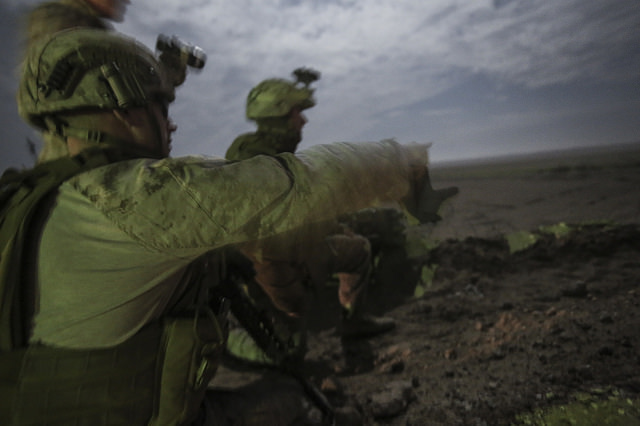by David Parmer
“Boots on the ground” (i.e. one sovereign country’s military forces operating in another sovereign country’s territory) is not always the first option of choice in geopolitics. A major power like the U.S. or Russia can influence a situation by supplying money, weapons, advice and intelligence support to a client or allied state without putting its own troops in harm’s way.
In some cases, “boots on the ground” is a quick in and out–it could be a response to something like a hostage situation or even a natural disaster. “Boots on the ground” may start off small, but there is always a chance for escalation.
Both the U.S. and Russia have memories of situations that began simply enough but then turned tragic. The U.S. had its Vietnam experience where it lost 58,000 troops, and the Russians had their Afghan experience where they lost 14,000 troops. The villain here is a concept known as “mission creep” where things start out small but escalate.
Which is all background for an announcement made by U.S. President Barack Obama on April 25 in Germany that an additional 250 American Special Operations Forces (SOF) would be sent to Syria as trainers and advisors. In October 2015, an initial 50 SOF personnel were dispatched. There is speculation that gains have been made, and the intention is to keep pressure on Daesh and go forward with the momentum. (Syria is not the only place where American boots are on the ground in the Middle East: there are now 4,000+ U.S. personnel in Iraq.)
Russia, despite its claims of leaving the Syrian conflict has SOF of its own in Syria. The Washington Post reported on March 29 that Russian Spetsnaz operators worked with Syrian, Iranian and Hezbollah fighters to capture the city of Palmyra from Daesh.
The Post also reports that the mission of Russian forces is similar to that performed by U.S. SOF operators, i.e. training and targeting, with one exception–that Russian SOF go into battle with their clients.
There are reports on a Russian officer being killed in the battle for Palmyra by calling in air support when surrounded by Daesh fighters.
And what is ahead? It is hard to say. The coalition says it is pressing the militants hard and taking the fight to them. The real question is if the people of the U.S. and Russia are willing to see their soldiers die or be held captive. For bullets fly both ways, and even the bad guys have a good day now and then. Is there commitment in the U.S. and Russia to see this to the end regardless of what it takes?
Please log in and let us know your thoughts.
Image Photo: U.S. Department of Defense via flickr (Public Domain)
 日本語
日本語 English
English 中国語
中国語